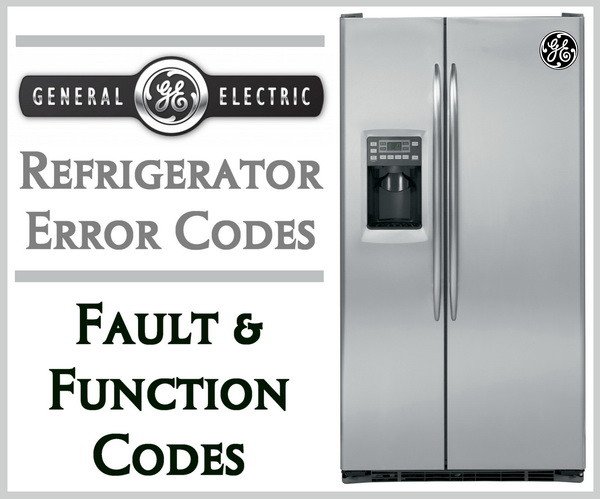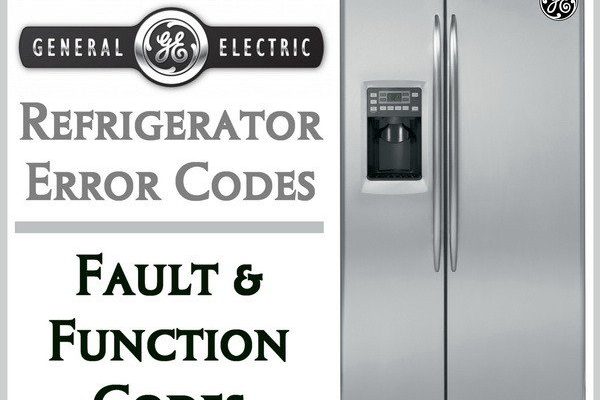
Here’s the deal: error codes are the appliance’s way of communicating. Just like when your car’s dashboard lights up, indicating something needs your attention, your refrigerator is trying to tell you there’s a glitch or an issue that needs a little troubleshooting. So, what exactly does error code E1 mean, and how does it affect the safety and functionality of your fridge?
Understanding Error Code E1 in GE Refrigerators
Error code E1 in your GE refrigerator is akin to a red flag from your appliance, waving to grab your attention. This specific code usually signifies a problem with the appliance’s temperature sensor or thermistor, which plays a key role in maintaining the correct temperature inside your fridge. Imagine the thermistor as a diligent thermostat that tells the cooling system when to kick in or take a break to keep everything at the right chill.
When the E1 code appears, it suggests that this sensor might be failing or has already failed, meaning it is no longer accurately gauging the temperature. Like trying to bake a cake without checking the oven’s heat, your refrigerator might not be cooling efficiently. Now, this doesn’t mean your fridge will stop working immediately—it might still chug along, but without its weather report (the thermistor), it may struggle to maintain the optimal temperature, potentially leading to spoiled food if left unchecked.
So, how does this impact safety? Running a fridge that can’t keep track of its temperature can lead to food not being stored at safe levels, especially perishable items like meats or dairy. It’s like trying to keep ice cream from melting using only a fan—it might work to some degree but not reliably for the long haul. Therefore, while your fridge won’t blow up or suddenly quit, it’s crucial to address this issue to ensure food safety and energy efficiency.
Steps to Take When You See the E1 Error Code
Spotting an E1 error code isn’t the end of the road for your GE refrigerator. In fact, it offers a built-in opportunity to troubleshoot and fix the issue, often without needing to call in a professional right away. Think of it as your chance to play detective, uncovering what might be a simple oversight or an easily replaceable part.
First, consider performing a reset. Sometimes, electrical appliances just need a good old-fashioned restart to clear any temporary hiccup. Unplug your refrigerator, wait a few minutes, and plug it back in. This simple action can sometimes reset the system, clearing the E1 code and restoring proper function. However, if the code persists, the next step involves inspecting the thermistor. This may require some handy work, such as removing panels to locate the sensor. If it’s damaged or disconnected, you might need to replace it. Replacement thermistors are generally available from appliance parts stores or directly from GE.
If DIY solutions don’t rectify the problem, don’t worry—calling in a professional is a wise choice. A skilled technician can ensure the issue is properly diagnosed and fixed, sparing you from additional headaches. Just like you wouldn’t ignore persistent noises in your car, ignoring persistent error codes on your refrigerator isn’t advisable.
Preventative Measures and Maintenance Tips
Once you’ve got your refrigerator back on track, you’ll probably want to keep it that way. Regular maintenance can significantly reduce the likelihood of encountering errors like E1, much like keeping regular service appointments for your car to avoid unexpected breakdowns.
Start by routinely cleaning the coils at the back or bottom of your refrigerator. Dust and debris can accumulate, making your appliance work harder than it needs to, similar to how clogged air vents can stifle your home’s air conditioning system. Keeping these coils clean can improve efficiency and longevity. Also, ensure your refrigerator is not overstuffed. Good air circulation inside the appliance is crucial for even cooling, just like how opening windows helps ventilate a stuffy room.
Additionally, consider checking the settings regularly. Ensure that your fridge and freezer are set to recommended temperatures for optimal performance. This can prevent overworking the thermistor and other components, much like adjusting the thermostat to prevent your furnace from overexertion.
Finally, keep an eye on door seals. Worn or damaged seals can let cold air escape, undermining the appliance’s efficiency, akin to a drafty window letting in cold air during winter. With these practices, you can keep your GE refrigerator running smoothly for years to come.
In conclusion, while encountering an E1 error code might be a bit daunting, it’s manageable. Addressing the issue proactively ensures your fridge remains safe to use, keeps your food fresh, and maintains energy efficiency. So, roll up your sleeves, consider the steps above, and rest easy knowing your fridge is in good hands.
